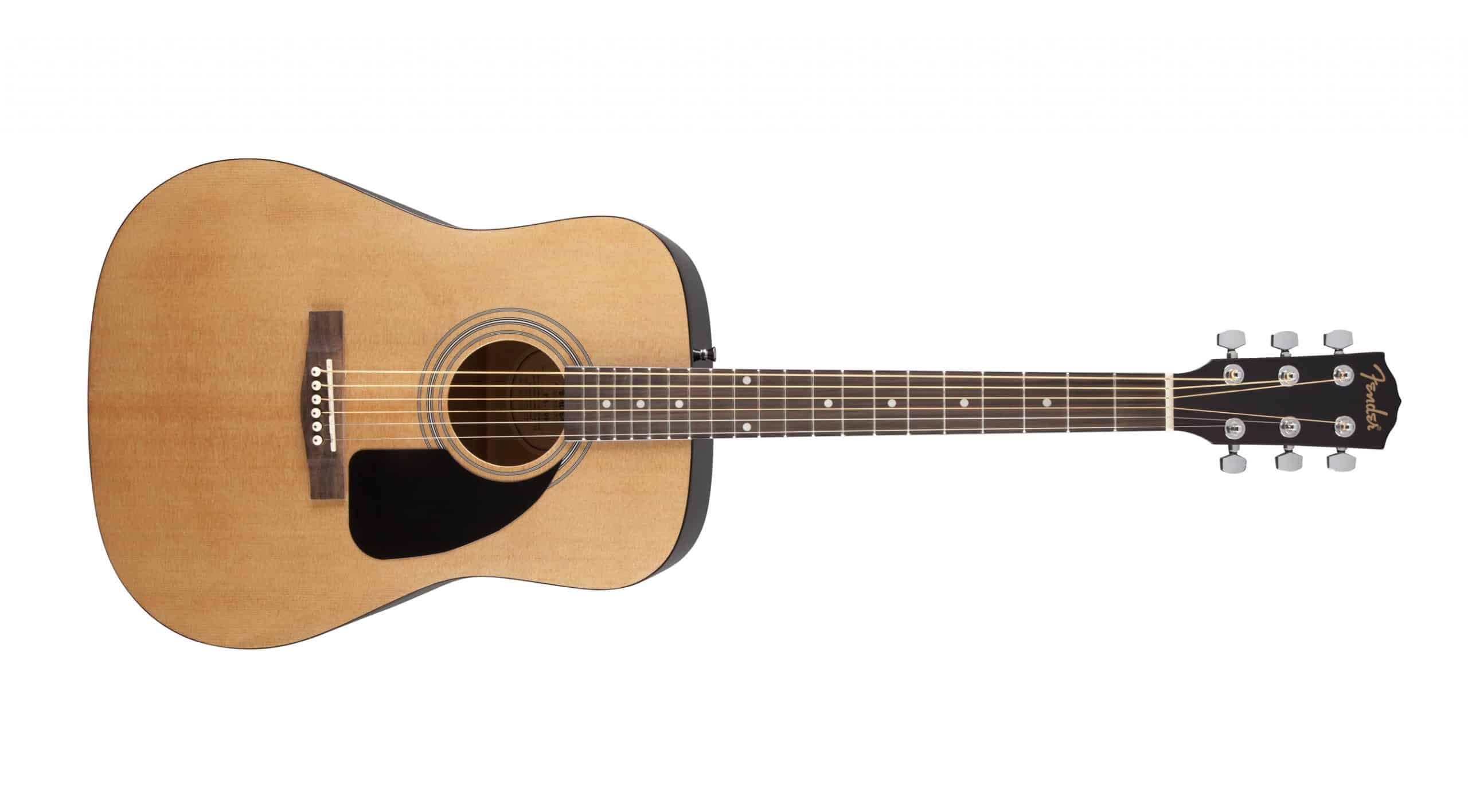Say you’re known to be the guitar pro among your circle and suddenly one of your friends goes –
hey, what is a dreadnought guitar? I have been hearing this term but I don’t know what that is, and though you’re the right guy to ask about it.
And in your mind be like,
sh*t, even I don’t know what that is! This is going to be embarrassing.
Well, I know how exactly that feels because I went through that and yes, that was embarrassing because he really expected me to know about the term because later on, we found out it was nothing but simply related to the shape of the guitar.
Related Read: Best Electric Guitar for Beginners
So, What is a Dreadnought Acoustic Guitar?
As I said, it’s a term that refers to the shape (and size) of an acoustic guitar. Usually, a dreadnought guitar will have a quite large body and the waist is relatively undefined.
However, the shape of upper and lower bouts of a dreadnought guitar is quite similar to other acoustic guitars – it’s just the shape of the waste and size of the guitar that differentiates it from other acoustics.
The width of the upper and lower bout is also similar when you compare it with that of the other acoustic guitar shapes such as Parlor guitars, Grand Auditoriums or Concert guitars.
Dreadnought’s Size: The size of a dreadnought guitar is not really similar to those as it is quite larger than most other classical and acoustic guitars. The only guitar that I see to be larger than a dreadnought cutaway guitar is a jumbo acoustic, which has the narrowest waist at the same time.
Why “Dreadnought”?
The name ‘dreadnought’ came from a very different field than music; ‘War’. Apparently, the name came from a British battleship named “HMS Dreadnought”, launched in 1906, during World War I.
This battleship was sixth of its kind but it was probably the most successful one and had few unique capabilities. This was the first battleship of its size that was powered by steam turbines and was the fastest battleship at that time.
It had a massive gun array that was protected with thick steel armor. The HMS Dreadnought was the first battleship that successfully sank a submarine.
To my guess, this series of the guitar was named ‘dreadnought’ to portray the large size and enormousness of the HMS Dreadnought.
Looking Back at Dreadnought Guitars
Martin Guitars produced the first-ever dreadnought guitar in 1916 but surprisingly, it was not sold under their name. Rather, they produced it for Oliver Ditson Company, a publishing firm based in London, and sold under their name.
It did not even include the Martin serial number, but instead had Ditson’s very own serial numbering system on them. And the original dreadnought got terrible sales.
The Oliver Ditson company demised in 1920 and till then, the dreadnoughts were selling under their name. In 1931, Martin Guitars started to produce dreadnoughts again but this time, under their name.
The first two models that they introduced were D-1 and D-2 acoustic guitars. The D-1 had a mahogany body instrument whereas the D-2 had a rosewood body instrument, which is still a very popular option.
If you can get your hand on an original Martin dreadnought produced before 1946, you could get tens of thousands of dollars as its value.
Dreadnought’s Popularity
Tell anyone to draw a picture of an acoustic guitar, and they’ll probably end up drawing something similar to a dreadnought. It’s because of the popularity it gained and it was used in a lot of popular music genres that it took a place in people’s subconscious mind.
If you consider the history of guitars, the dreadnought shape is relatively quite young but it’s a very popular shape that’s going around.
In fact, it was considered to be the most popular guitar shape for a while, before the Grand Auditorium shape took over. The Grand Auditorium is, however, quite similar in size with dreadnoughts, maybe a little smaller, and has a more defined and curved waist.
However, the dreadnought didn’t get the popularity right away. Though it was introduced in the early 1900s, it got popular in the mid-1900s. And from then the popularity kept going up and as a result of that, dreadnought has become one of the most common shapes for guitars.
Dreadnought’s Sound
Dreadnoughts have a large body and thus, they tend to produce a loud sound which is quite boomy in tone. The increased volume is caused by the increased reverberation that happens due to the large soundboard of the dreadnought shape.
Dreadnoughts are a good fit to play with most of the popular guitar-driven genres such as acoustic rock, country, pop, etc.
In the early days, they were popular among the folk musicians too. But today’s folk musicians usually prefer Concert/00 or Grand Auditorium/Performance shaped guitars.
Hmm, now you know what a dreadnought guitar is!
So, now that you know what a dreadnought guitar is, will you be like – “Damn, I had it in front of my eyes all these years yet I didn’t know”? Because that was my reaction. But at least whenever someone asks you again, ‘what is a dreadnought guitar?’ you’ll be able to answer its history out.
If you have any further questions regarding dreadnoughts, shoot them in the comments below. I’ll be happy to get back to you.


